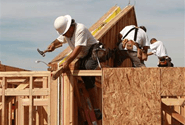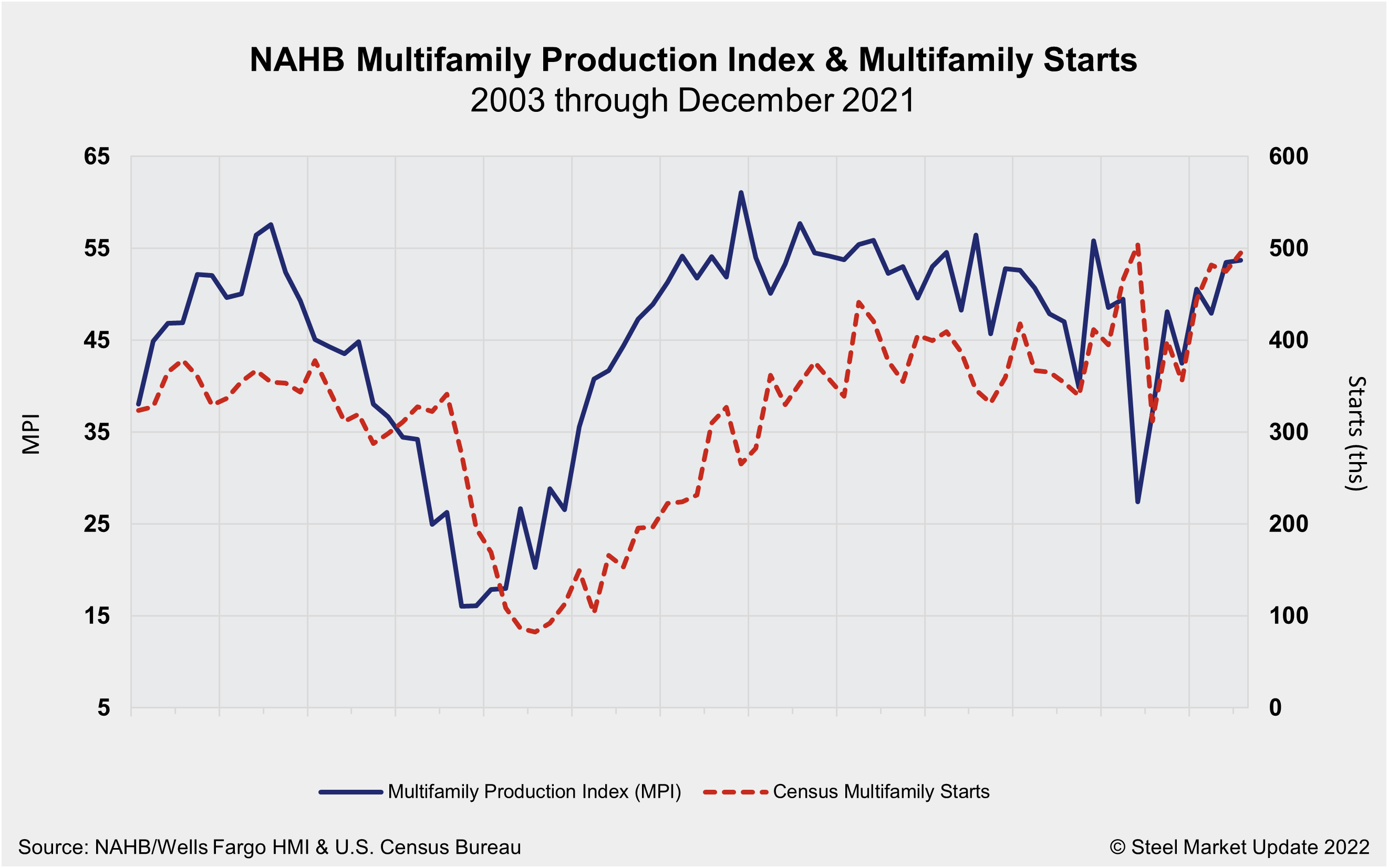Steel Markets

Multifamily Construction Ends Q4 on a High
Written by David Schollaert
February 25, 2022
The outlook for multifamily construction closed the year on a positive note, as confidence in the market for new multifamily housing improved in the fourth quarter of 2021, according to the National Association of Home Builders’ (NAHB) Multifamily Market Survey (MMS).
The MMS’s two separate indices saw mixed results. The Multifamily Production Index (MPI) gained one point to 54 versus the previous quarter, while the Multifamily Occupancy Index (MOI) fell six points to 69.
The MPI measures builder and developer sentiment about current conditions in the apartment and condo market, while the MOI measures the multifamily housing industry’s perception of occupancies in existing apartments. Both are measured on a scale of 0 to 100, and a result above 50 indicates growth.
The MPI is a weighted average of three key elements of the multifamily housing market: low-rent units-apartments, market-rate rental units-apartments, and condominiums. Two of the three components increased from Q3 to Q4 2021. The component measuring market rate rental units inched up one point to 61, while the component measuring for-sale units posted a six-point gain to 53. The component measuring low-rent units fell seven points to 48 during the same period.
“Multifamily developers remain largely optimistic about this segment of the market,” said Sean Kelly, NAHB’s Multifamily Council. “Demand in many parts of the country has been strong enough to compensate for the rising costs of land, labor and materials.”
The MOI measures current occupancy indexes for class A, B and C multifamily units. Even though the index fell six points to 69, it remains as high as it’s been at any time prior to the second quarter of 2021.
“The strength of the MPI is consistent with Census production statistics, which show 750,000 apartments under construction and new apartments being started at a rate in excess of 500,000 per year,” said Robert Dietz, NAHB’s chief economist. “The modest decline in the very strong MOI number is not likely to result in any significant change in Census rental occupancy rates, which are still rising and will likely remain high given the strong 69 index number from our survey.”

About the report: The Multifamily Market Survey (MMS) is based on a quarterly survey of NAHB multifamily builders and property managers. The survey is designed to monitor conditions for multifamily production (starts) and multifamily rental occupancy in the current versus preceding quarter as well as in the next six months.
By David Schollaert, David@SteelMarketUpdate.com

David Schollaert
Read more from David SchollaertLatest in Steel Markets

CMC looks beyond Arizona micro-mill woes to long-term viability of construction mart
Despite the economic and geopolitical upheaval of the last five years, CMC President and CEO Peter Matt points out that the construction market has been an essential element of the way forward.

US importers face stricter rules under revamped S232 tariffs
“CBP expects full compliance from the trade community for accurate reporting and payment of the additional duties. CBP will take enforcement action on non-compliance," the agency said in a March 7 bulletin.

Steel exports rebound in January
US steel exports recovered to a five-month high in January after having fallen to a two-year low in December. This growth follows four consecutive months of declining exports.

Construction spending drops marginally in January
Construction spending edged down slightly in January, slipping for the first time in four months. The US Census Bureau estimated spending at a seasonally adjusted annual rate of $2,196 billion in January, down 0.2% from December’s downward revised rate. The January figure is 3.3% higher than a year ago. January’s result, despite the slight erosion, […]

HVAC equipment shipments slow in December but strong annually
Shipments of heating and cooling equipment in the US fell to an 11-month low in December, according to the latest data released by the Air-Conditioning, Heating, and Refrigeration Institute (AHRI).
